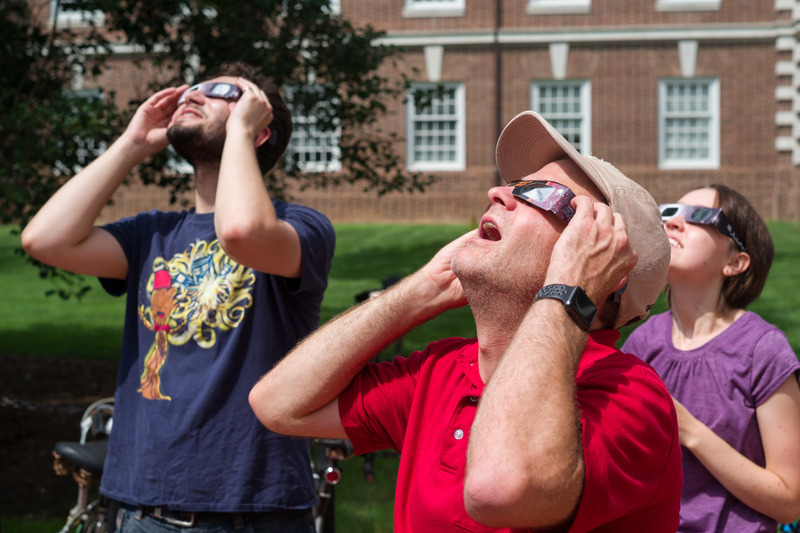


Watching the solar eclipse safely
Photos by Evan Krape April 05, 2024
Eye protection essential when watching solar eclipse
It's the sight of a lifetime, but a solar eclipse can cause permanent damage to your eyes if you don't protect them. (In Newark, Delaware, a partial eclipse is predicted to begin at about 2:07 p.m. on Monday, April 8, reach its maximum — just under 90 percent — about 3:23 p.m. and be done by 4:34 p.m.)
Here are guidelines from NASA, the American Astronomical Society, the American Academy of Ophthalmology, the National Science Foundation and the American Academy of Optometry:
Do not look directly at the sun at any time during a partial eclipse. Only those in the "path of totality," where the moon will completely cover the sun's surface, may look directly at the sun and then only during the brief, 100% coverage period. The sun's rays are so strong, they will damage your eyes. The damage is painless — you won't notice it happening — but it can be serious and irreversible.
Sunglasses — no matter how dark — are not enough. Wear protective eclipse glasses or viewers that are compliant with ISO 12312-2 safety standards. Many models are available for $1 or less. The devices must be undamaged — no holes, cracks or scratches on the area your eyes will look through. If you have these glasses/viewers, you can watch the eclipse from start to finish, and if you keep them in good condition they are reusable.
Not all glasses marketed as solar-eclipse-safe meet the ISO 12312-2 international safety standard. The American Astronomical Society has vetted many models and its website offers a thorough explanation of how to find ISO-compliant glasses and handheld viewers, along with lists of more than 7,000 libraries (including 10 in Delaware) and retailers that may have them. The AAS also lists solar filters required for telescopes, binoculars and camera lenses.
Do not look at the sun through an unfiltered telescope, camera or binoculars even if you are wearing protective eyewear. Attach the proper filter to the front of the lens. Otherwise, the optical instrument is sending concentrated rays to your (insufficiently protected) eyes.
Put your glasses/viewers on before you look at the sun and turn away from the sun before you take them off. Be sure children do likewise.
If you don't have protective eyewear, you may safely see the partial eclipse through a pinhole projection and other indirect methods. You can learn about several of these methods on the AAS website.
You can find much more information on NASA's Eclipse 2024 web page and other tips on the StarNet libraries page.

Contact Us
Have a UDaily story idea?
Contact us at ocm@udel.edu
Members of the press
Contact us at 302-831-NEWS or visit the Media Relations website

